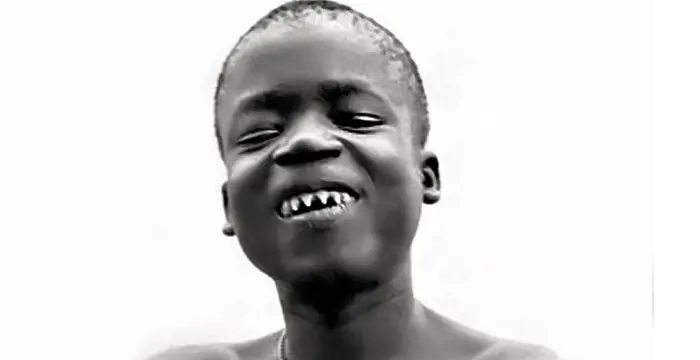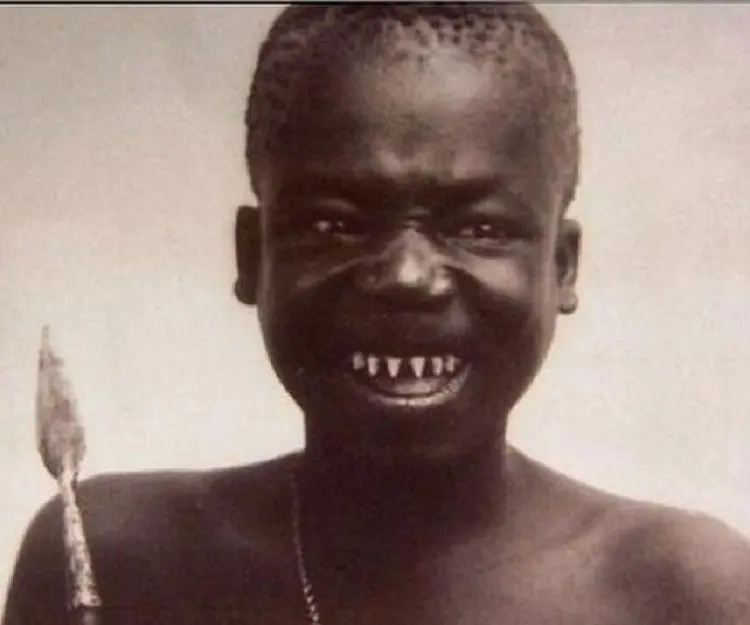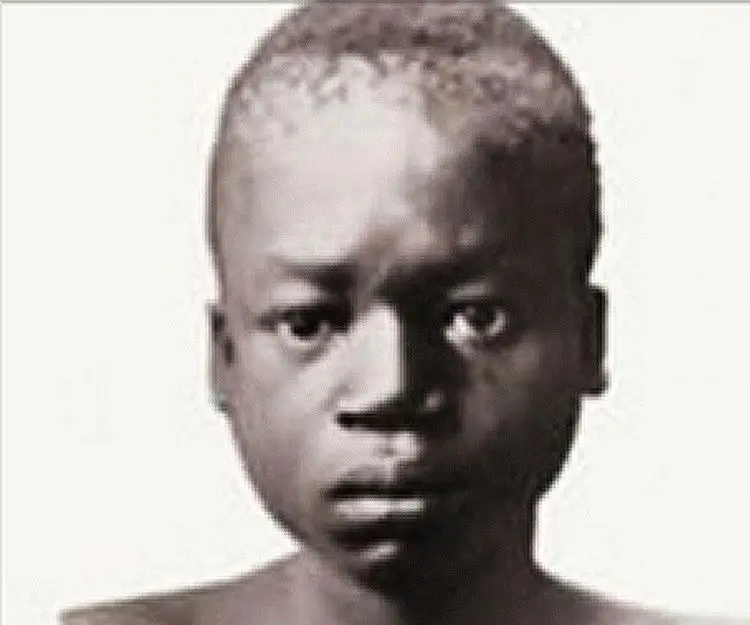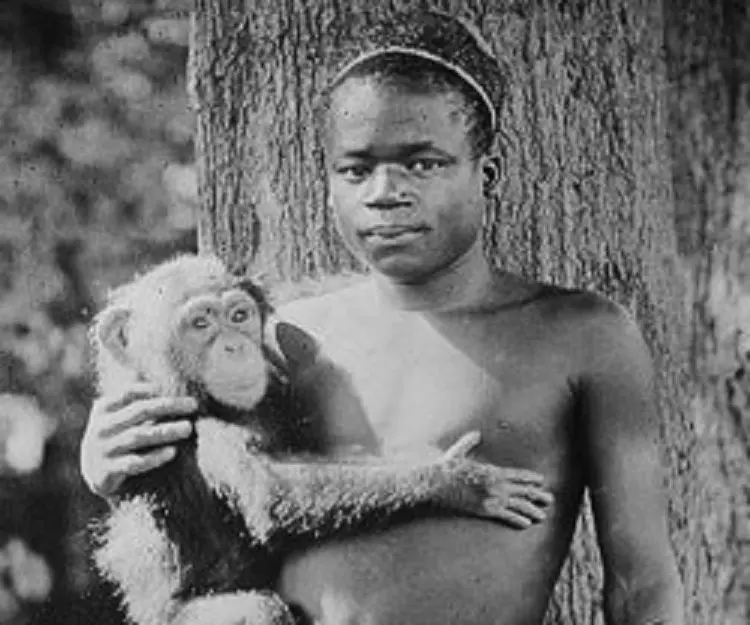
Ota Benga - Congolese Mbuti Pygmy, Timeline and Childhood
Ota Benga's Personal Details
Ota Benga was a Congolese Mbuti pygmy, best known for being featured in an exhibit in the Bronx Zoo in New York, with monkeys
| Information | Detail |
|---|---|
| Birthday | January 1, 1883 |
| Died on | March 20, 1916 |
| Nationality | Congolese |
| Famous | Miscellaneous, Congolese Mbuti Pygmy |
| Birth Place | Colonization of the Congo |
| Height | 150 |
| Gender | Male |
| Sun Sign | Pisces |
| Born in | Colonization of the Congo |
| Famous as | Congolese Mbuti Pygmy |
| Died at Age | 33 |
Ota Benga's photo
Who is Ota Benga?
Ota Benga was a Congolese Mbuti pygmy, best known for being featured in an exhibit in the Bronx Zoo in New York, with monkeys. He was initially brought to America by businessman, missionary and explorer, Samuel Phillips Verner, to feature in an anthropology exhibit at the Louisiana Purchase Exposition in St. Louis, Missouri in 1904. He was part of a group of African tribesmen who were displayed as examples of "earlier stages" of human evolution to demonstrate the then popular cultural evolution theory. He later got his own human zoo exhibit in 1906 at the Bronx Zoo, and was subsequently placed in the Monkey House exhibit alongside Dohong, a trained orangutan. During the later part of his life, he was taken into custody by Reverend James M. Gordon, who arranged for his education and later employment at a tobacco factory. However, after his dreams of returning to his homeland were crashed at the onset of World War I, he committed suicide by shooting himself in the heart on March 20, 1916.
// Famous Miscellaneous
Jason Simpson
Jason Simpson is the son of former NFL running back, broadcaster and actor O. J. Simpson. Check out this biography to know about his childhood, family, life, and little known facts about him.
Melissa Brim
Melissa Brim is the ex-girlfriend of former professional boxer Floyd Mayweather Jr. Check out this biography to know about her birthday, childhood, family life, achievements and fun facts about her.
Joyce Meyer
Joyce Meyer is a Christian author and speaker. This biography provides detailed information about her childhood, life, achievements, works & timeline
Early Life
Ota Benga was born around 1883 in Colonial Congo into the Mbuti pygmy tribe. He lived with his tribe in equatorial forests near the Kasai River which was at the time part of the Belgian Congo.
To use the native people as laborers in the rubber supply business in Congo, King Leopold II of Belgium had formed the Force Publique militia, which killed people of Mbuti pygmy tribe including Ota Benga’s wife and two children. Benga survived the massacre as he was out on a hunting expedition when the militia raided his village.
He was subsequently captured by slave traders from the tribe known as the Baschelel. Samuel Phillips Verner found Benga while travelling to a Batwa village in 1904 and released him from the slave traders, exchanging a pound of salt and a bolt of cloth.
Verner had gone to Africa under contract from the Louisiana Purchase Exposition (St. Louis World Fair) to bring back an assortment of pygmies for an exhibition. By displaying people from vastly different cultures, W. J. McGee, a noted scientist, intended to demonstrate the then popular cultural evolution theory to the common people.
Verner took Ota Benga to the Batwa village to recruit more pygmies for the exhibition, but the villagers had become distrustful of muzungu (white people) due to the violent actions of King Leopold II's people. However, Verner, who later claimed to have saved Benga from cannibals, used his help to convince a few villagers to accompany him back to America.
Exhibitions & Later Life
Ota Benga, along with the group of African men, was brought to St. Louis, Missouri in late June 1904 without Verner, who was down with malaria. Immediately upon arrival, the group became the center of attraction in the Louisiana Purchase Exposition, with Benga becoming particularly popular among media personalities who extensively reported on him.
Because visitors were eager to see his teeth which were filed to sharp points as ritual decorations early in his youth, the officials promoted him as "the only genuine African cannibal in America". The African tribesmen were instructed to charge money for their photographs and performances, and Benga reportedly charged five cents to show his teeth.
During their performance on July 28, 1904 the African tribals catered to the crowd's preconceived notion of Africans as "savages", which resulted in an overwhelming turnout that had to be controlled by the First Illinois Regiment. They performed in a warlike fashion, imitating American Indians at the Exhibition, following which Benga earned the admiration of the Apache chief Geronimo who gave him one of his arrowheads.
When Verner arrived there a month later, they were already drawing huge crowds that even thwarted their attempts at peaceful congregation in the forest on Sundays. Verner was awarded gold medal in anthropology after the Exhibition ended, but McGee's serious science exhibit was turned into a show.
Ota Benga returned to the Congo along with Verner and the other Africans, and lived among the Batwa for a brief period of time. Despite being free, he decided to accompany Verner on his African adventures, helping him collect artifacts and specimens and procure rubber and ivory for resale.
He married for a second time during this period, but his wife died of a snake bite shortly after. Feeling distanced from the Batwa people, he later decided to return to the US with Verner.
While Verner sought employment at the American Museum of Natural History in New York City to exhibit his acquisitions from Africa, the curator Henry Bumpus was interested in Benga instead. Verner arranged for him to stay in a spare room of the museum while he sought employment elsewhere, and Benga started to entertain visitors wearing a Southern-style linen suit.
He reportedly became homesick soon after and started to showcase errant behavior intentionally, often exploiting his employers' presentation of him as a 'savage'. He once tried to slip past guards in front of a large crowd and even threw a chair towards a wealthy donor's wife, pretending not to understand the instructions.
In 1906, Bumpus suggested that Verner took him to the Bronx Zoo, where the director of the zoo, William Hornaday employed him as an extra hand to maintain the animal habitats. However, the visitors at the zoo started to take more interest in Benga than the animals, which did not go unnoticed by Hornaday.
Soon after, the director arranged for a separate exhibition for Benga, where he was allowed to roam freely. He became very fond of Dohong, an orangutan taught to perform tricks and imitate humans.
Ota Benga started to spend more time in the Monkey House exhibit and subsequently had exhibition alongside Dohong, which started on September 8, 1906. The officials encouraged him to hang his hammock there, as well as to shoot his bow and arrow at a target.
After Madison Grant, the Secretary of the New York Zoological Society, prompted Hornaday to exhibit Benga alongside apes at the Bronx Zoo, a group of African-American clergymen led by Reverend James M. Gordon started protesting. Probably the unwelcome attention made Benga act more violently, which eventually forced the zoo officials to release him into Gordon's custody by the end of 1906.
Ota Benga stayed in Howard Colored Orphan Asylum till 1910, and then was relocated to Lynchburg, Virginia, where he was tutored by poet Anne Spencer and attended elementary school at the Baptist Seminary in Lynchburg. Leaving the school, he started working at a Lynchburg tobacco factory, and meanwhile also planned to return to Africa.
After World War I broke out in 1914, passenger ship traffic to Congo was stopped, which dashed his dreams of returning to his homeland and led him to depression. On March 20, 1916, he committed suicide by shooting himself in the heart with a stolen pistol, and was later buried in an unmarked grave in the black section of the Old City Cemetery.
Trivia
The American Museum of Natural History contains a life mask and body cast of Ota Benga, which is still labeled as 'Pigmy' despite century-long criticism by Verner and others. After Verner's grandson Phillips Verner Bradford published the book 'Ota Benga: The Pygmy in the Zoo' in 1992, his story was revisited by many later authors.
// Famous Pisces Celebrities peoples
Christine Baumgartner
Christine Baumgartner is an American model and the wife of famous American actor Kevin Costner. Check out this biography to know about her birthday, childhood, family life, achievements and fun facts about her.
Galina Becker
Galina Becker is a former athlete and fitness model from America. Check out this biography to know about her birthday, childhood, family life, achievements and fun facts about her.
Nikkie De Jager
Check out all that you wanted to know about Nikkie De Jager, the famous Dutch Makeup artist; her birthday, her family and personal life, her boyfriends, fun trivia facts and more.
Ota Benga biography timelines
- // 1883Ota Benga was born around 1883 in Colonial Congo into the Mbuti pygmy tribe. He lived with his tribe in equatorial forests near the Kasai River which was at the time part of the Belgian Congo.
- // 1904He was subsequently captured by slave traders from the tribe known as the Baschelel. Samuel Phillips Verner found Benga while travelling to a Batwa village in 1904 and released him from the slave traders, exchanging a pound of salt and a bolt of cloth.
- // Jun 1904Ota Benga, along with the group of African men, was brought to St. Louis, Missouri in late June 1904 without Verner, who was down with malaria. Immediately upon arrival, the group became the center of attraction in the Louisiana Purchase Exposition, with Benga becoming particularly popular among media personalities who extensively reported on him.
- // 28th Jul 1904During their performance on July 28, 1904 the African tribals catered to the crowd's preconceived notion of Africans as "savages", which resulted in an overwhelming turnout that had to be controlled by the First Illinois Regiment. They performed in a warlike fashion, imitating American Indians at the Exhibition, following which Benga earned the admiration of the Apache chief Geronimo who gave him one of his arrowheads.
- // 1906In 1906, Bumpus suggested that Verner took him to the Bronx Zoo, where the director of the zoo, William Hornaday employed him as an extra hand to maintain the animal habitats. However, the visitors at the zoo started to take more interest in Benga than the animals, which did not go unnoticed by Hornaday.
- // 1906After Madison Grant, the Secretary of the New York Zoological Society, prompted Hornaday to exhibit Benga alongside apes at the Bronx Zoo, a group of African-American clergymen led by Reverend James M. Gordon started protesting. Probably the unwelcome attention made Benga act more violently, which eventually forced the zoo officials to release him into Gordon's custody by the end of 1906.
- // 8th Sep 1906Ota Benga started to spend more time in the Monkey House exhibit and subsequently had exhibition alongside Dohong, which started on September 8, 1906. The officials encouraged him to hang his hammock there, as well as to shoot his bow and arrow at a target.
- // 1910Ota Benga stayed in Howard Colored Orphan Asylum till 1910, and then was relocated to Lynchburg, Virginia, where he was tutored by poet Anne Spencer and attended elementary school at the Baptist Seminary in Lynchburg. Leaving the school, he started working at a Lynchburg tobacco factory, and meanwhile also planned to return to Africa.
- // 1914 To 20th Mar 1916After World War I broke out in 1914, passenger ship traffic to Congo was stopped, which dashed his dreams of returning to his homeland and led him to depression. On March 20, 1916, he committed suicide by shooting himself in the heart with a stolen pistol, and was later buried in an unmarked grave in the black section of the Old City Cemetery.
Ota Benga's FAQ
What is Ota Benga birthday?
Ota Benga was born at 1883-01-01
When was Ota Benga died?
Ota Benga was died at 1916-03-20
Which age was Ota Benga died?
Ota Benga was died at age 33
Where is Ota Benga's birth place?
Ota Benga was born in Colonization of the Congo
What is Ota Benga nationalities?
Ota Benga's nationalities is Congolese
How tall is Ota Benga?
Ota Benga's height is 150
What is Ota Benga's sun sign?
Ota Benga is Pisces
How famous is Ota Benga?
Ota Benga is famouse as Congolese Mbuti Pygmy








